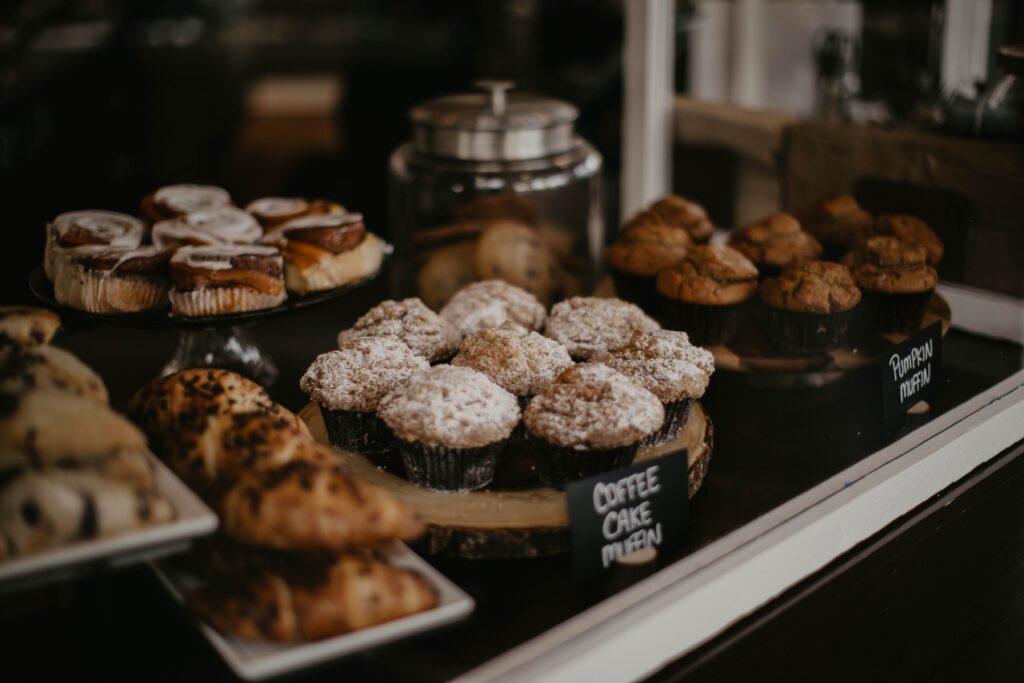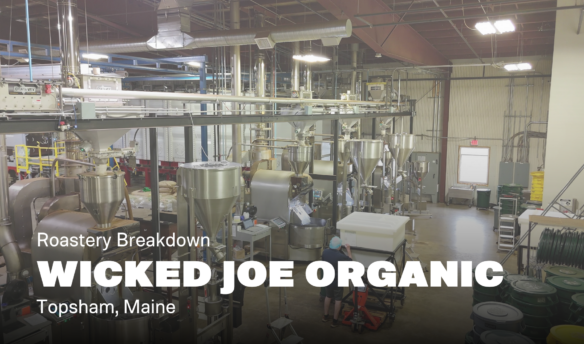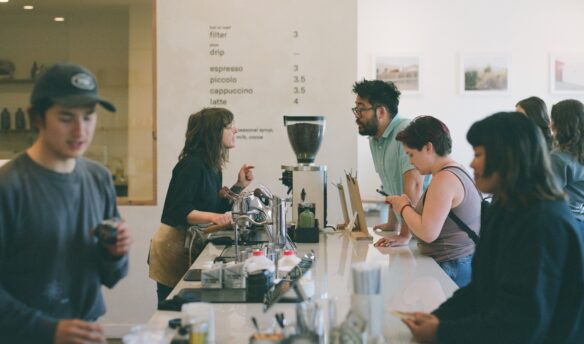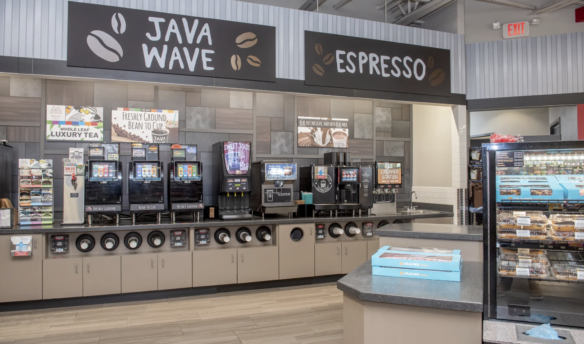As inflation continues to spike, costs for all goods and services have risen steadily over the past year with no signs of slowing down. The Consumer Price Index (CPI), which measures the cost of a representative group of consumer goods, rose 8.6 percent this year as of May 2022.
This is the highest spike in inflation the United States has seen in over 40 years—and the U.S. isn’t the only country experiencing rising costs. The most significant increase measured by the CPI was in the energy sector, which factors into the price of all goods since most things are manufactured and transported using energy.
The effects of inflation trickle down the supply stream. As prices go up, so do product and labor costs since workers are purchasing goods that now cost more money and need higher wages to make ends meet.
Coffee businesses often operate on tight margins to begin with, so where can owners cut costs to meet the challenges of current inflation levels?
A successful approach to cost-cutting is both multi-faceted and value-driven. When thinking about where to cut costs, the best step is to outline your values: ask where you are and aren’t willing to compromise, and then get creative. As the old adage goes, every penny saved is a penny earned. The owners we interviewed shared strategies they’ve used to combat rising costs while maintaining the things that matter most.
Price Increases
We sent out a survey to see how coffee company owners are coping with and managing inflation. When the cost of goods and services (COGS) goes up, prices must go up, and all respondents reported raising prices to deal with inflation.
“We raised our prices like everyone else,” says Andrew Piper of Java Central in Columbus, OH.
“As costs on almost everything have gone up,” prices have had to go up, says Scot [last name missing from survey] of Dark Shot Coffee in Reno, NV.
At The Caffeinery in Muncie, IN, price rises were vital to addressing product and labor costs. “We’ve raised prices to not only be in line with the cost of goods sold, but with what we feel the job is actually worth to the community we serve,” says owner Frank Reber. “There’s no reason that specialty shops should need to compete with drive-thru chains in price.”
“We had to raise all prices for the first time in 8 years,” says John Jenkins of Orange County Roasters in Orange, VA.
Product Costs
Products like milk, cups, lids, sugar, etc., have increased significantly in the last year. Inflation has touched every aspect of operating a coffee business—green coffee prices are up, and current gas prices have made transportation (moving coffee to a warehouse, delivering products from a roastery to cafés) more expensive. So how are owners addressing elevated product costs?
At The Caffeinery, Reber is looking to reduce disposables to cut costs. His goal is to reduce disposable items like cups and lids by 70 percent by the end of the year. “Since the largest markups [largest price increases] are cups, lids, straws, etc., it only makes sense to reduce the use of these items,” he says. “Besides, it’s better for the environment.”
Additionally, shipping costs and delays have complicated logistics for these items, compelling business owners to cut as much as they can simply because they don’t have supplies. “We’re in the process of implementing a cup-exchange program at the café,” says Reber. “We’ve already switched over to dairy suppliers that utilize glass bottles and a bottle exchange program.”
An anonymous café owner has also returned to ceramic cups after switching to-go cups in 2020 to prevent the spread of COVID-19. “More dishwashing but less cost for paper cups and lids,” he says. His company is also swapping out common items, particularly paper goods, for lower-cost equivalents.
“We’ve been looking for cheaper ingredients without sacrificing the quality of our product,” says Piper of Java Central. “It’s been a challenge to get creative. Things like finding more efficiencies, reducing our menu size, paring down waste, and looking for new revenue streams to offset our operating costs have all helped keep our finances sustainable.”
To curb green coffee and transport costs, Jenkins has focused on booking coffee well in advance, which usually comes with discounts. After green coffee arrives at port, it’s typically stored in a third-party warehouse and then trucked to a roastery. Both transit and warehouse storage cost money, and elevated gas prices have led to steep increases. To combat these costs, Jenkins added warehouse space to allow Orange County to bring all coffee directly to their warehouse.
Scot at Dark Shot is comparing delivery costs to figure out the most cost-efficient way to get orders to customers. “I’m also asking vendors for larger-quantity pricing,” he adds, a potential option for businesses that are scaling up.
Labor Costs
As general costs rise, workers need more money to stay afloat, leading some states and cities to increase the minimum wage. Some companies have raised wages to remain competitive, even when not required by law.
The Caffeinery also moved to a four-day work week for staff (aside from owners). “Reduced hours seem to be quite effective,” he says. “Instead of losing business by having a shorter day, they condense sales to a smaller and more manageable window. Most of our new policies are creating a win/win situation for our bottom-line as well as employee well-being.”
Reber is happy to raise prices in order to raise wages: “The work being done by proper baristas is extremely valuable. and they should be rewarded and compensated for their efforts,” he says. It costs a lot to pay baristas appropriately, so his company is being as efficient as possible by communicating with the team and keeping it small. “That way, everyone is taken care of in terms of hours and finances.”
Others are considering new systems, like automated machinery to streamline production. “We are considering adding packaging automation,” says Jenkins at Orange County, “to raise production and mitigate labor costs.”
Every Penny Saved is a Penny Earned
“All this work is incremental, but crucial, to our continued operation,” says Jenkins. As businesses face higher costs from all directions, the best move you can make is to take a comprehensive look at all costs—even those that seem negligible—and look at where you can save that proverbial penny without sacrificing your values.
All photos courtesy of The Caffeinery.
Now that we’ve reported on how inflation affects business owners in the coffee sector, we’d like to hear from coffee workers: if you’re a barista, production worker, or anyone who works hourly in coffee, please fill out our inflation survey.
RJ Joseph is a coffee writer focusing primarily on equity, workers’ rights, and structural alternatives to the status quo. She’s been a barista, a roaster, a green coffee grader and lab tech, and finally made coffee writing her full-time gig at Red Fox Coffee Merchants. In her decade in coffee, she’s also run a queer coffee events organization, written a blog on equity in coffee, and run a coffee satire website called The Knockbox. If you see her around, say hi.


















